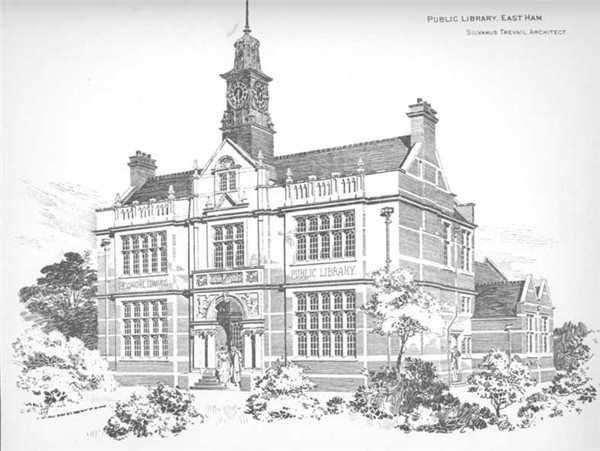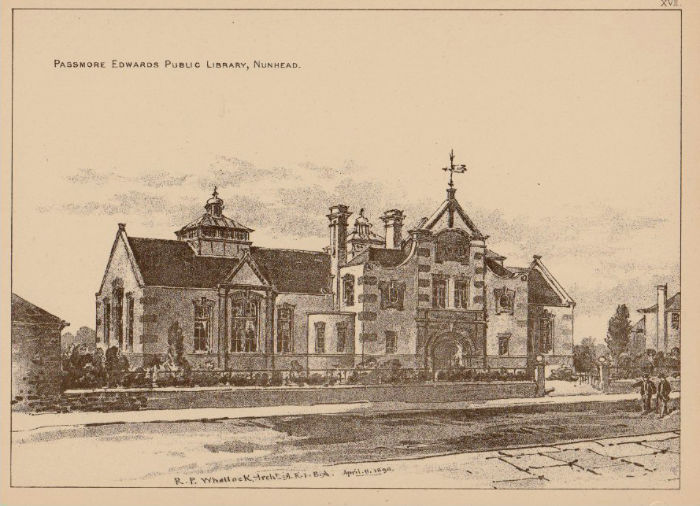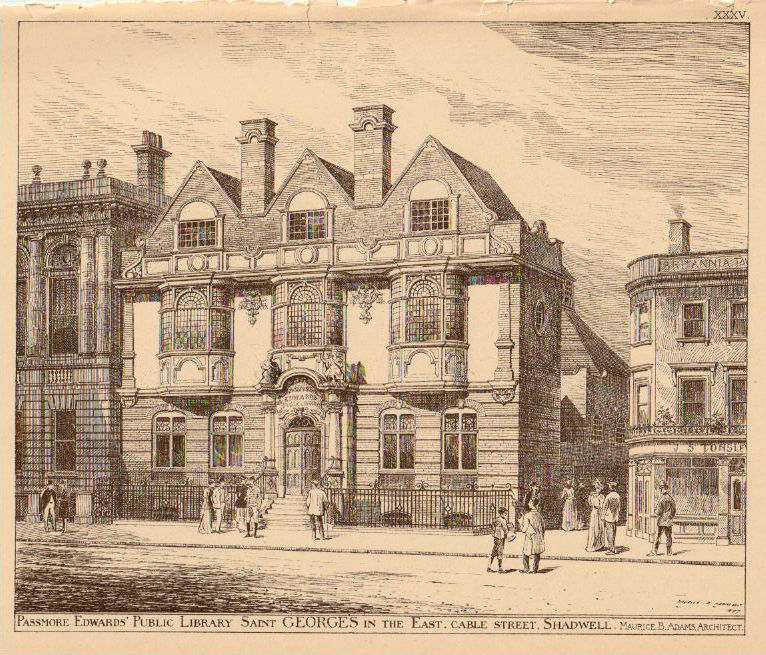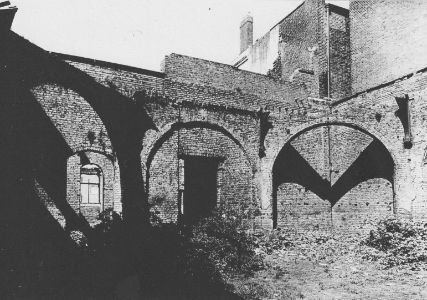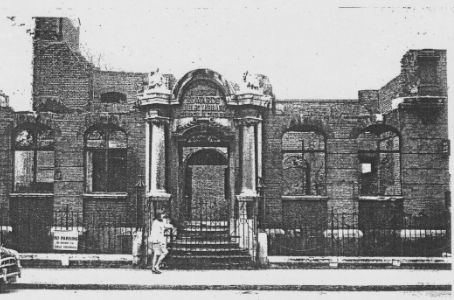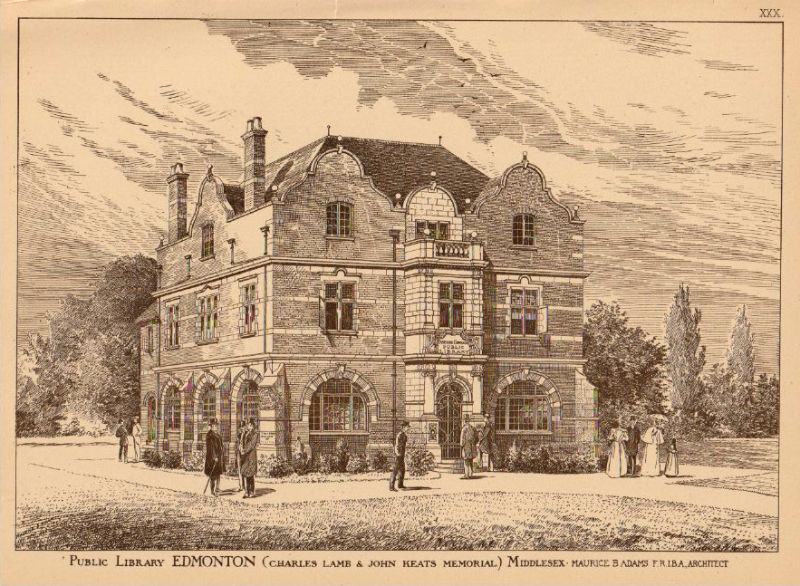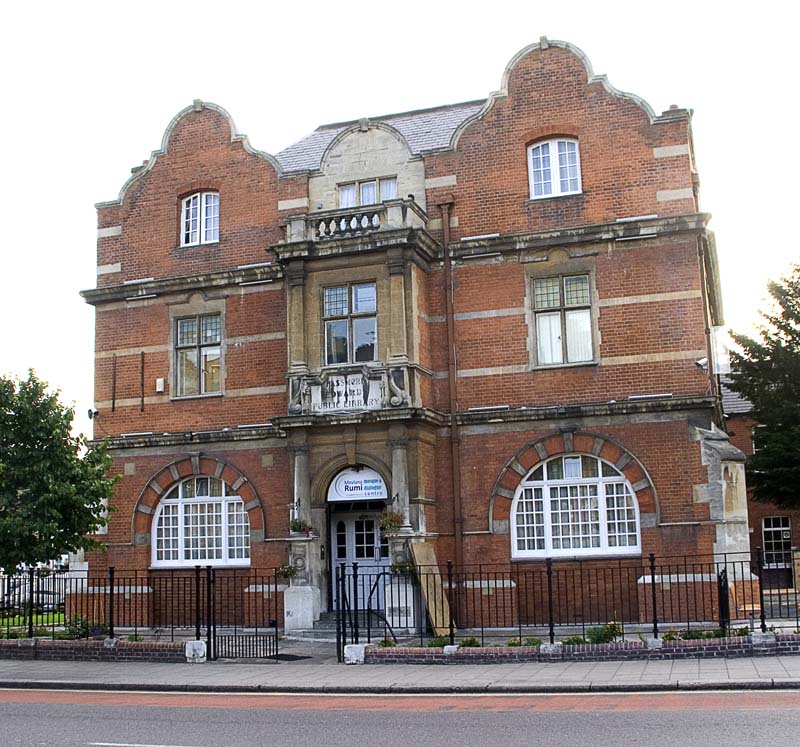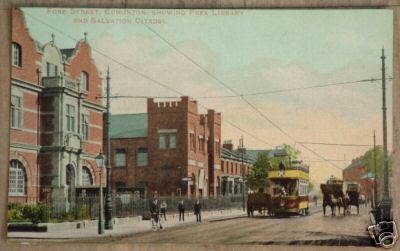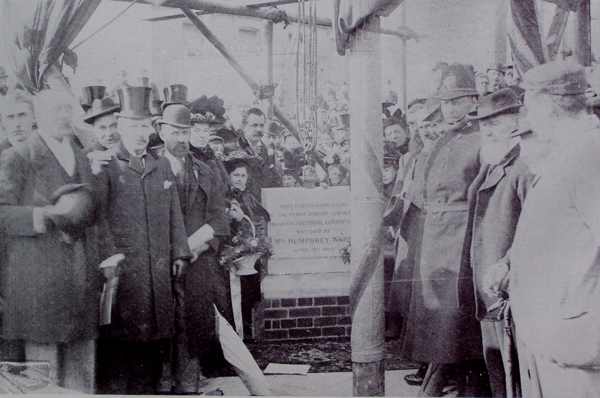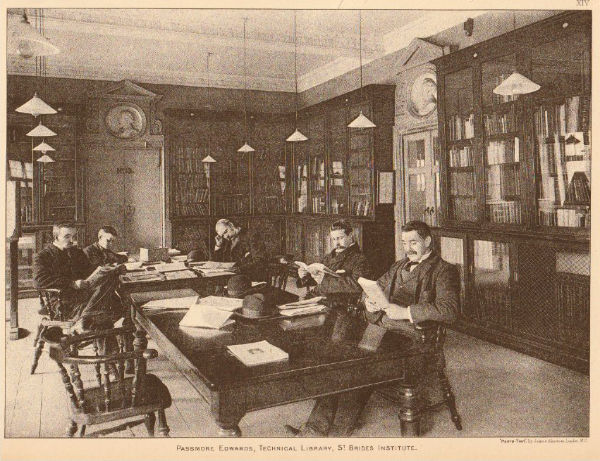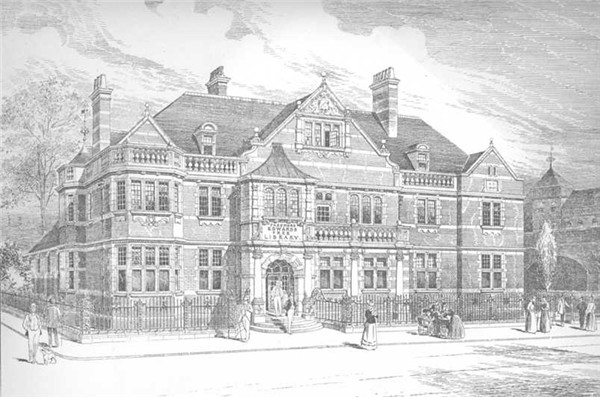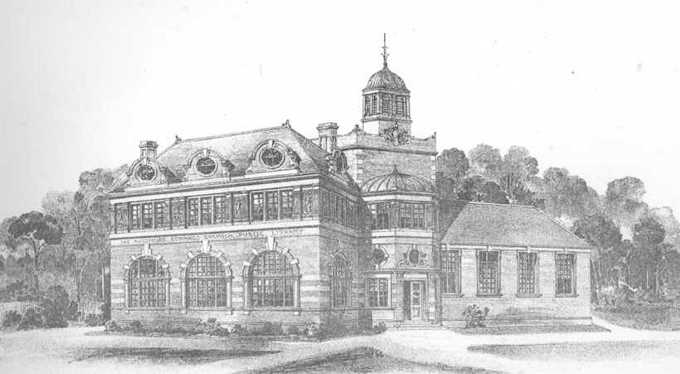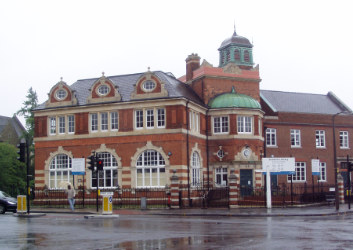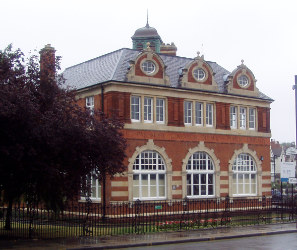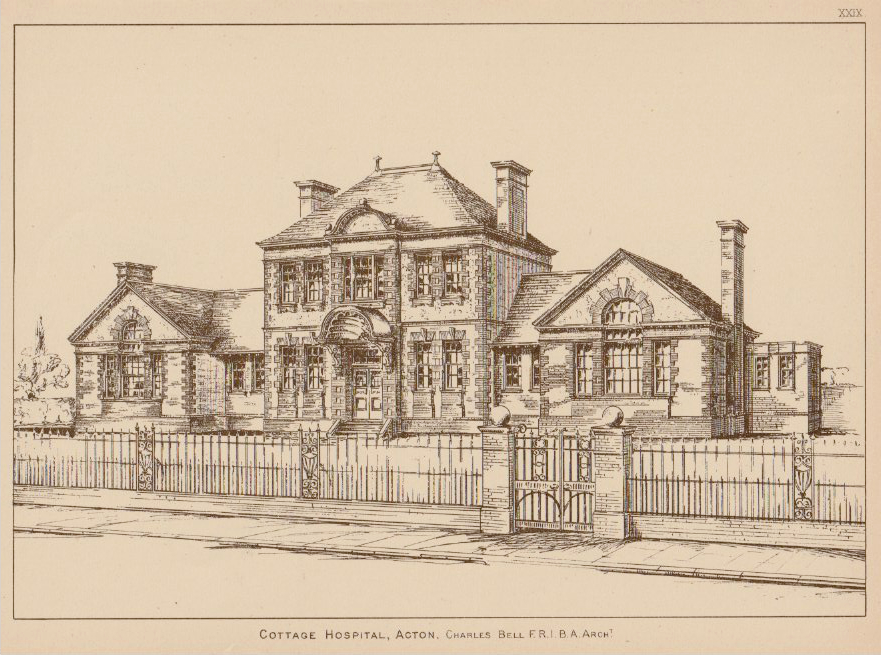Long before Passmore Edwards began his major philanthropic works, the English Mechanic, of which he was proprietor, was involved in raising funds for the replacement of the lifeboat at Broughty Ferry, near Dundee, Scotland. This was launched in 1876.
The English Mechanic was a weekly newspaper published from 1865 to 1926. Much of the content was supplied by the readers in as much that it discussed scientific, engineering and such matters of the day, to such an extent that the readers affectionately referred to the paper as “ours” Readers and contributors spanned the world and from all sections of society. John Passmore Edwards purchased the paper during its first year of publication and it was his management that made it such a success. Its success clearly contributed to his substantial wealth which he later applied to his philanthropic work.
The 15 October, 1869, edition of the English Mechanic and Mirror of Science, to give it its full title, contained a detailed account of the design and build of an English lifeboat. The purpose was stated as “to convey a clear and distinct conception of the manner in which this boat can be built in any part of the world where a boat builder can be found, and thus contribute, through the English Mechanic, towards the great and sacred object of the Lifeboat Institution-that of saving a brother’s life in peril by shipwreck”. The unnamed contributor gave instruction not only on building the lifeboat but also the transporting carriage, a summary of the Lifeboat associations regulations and the association’s arrangements at that time, all within no more than 3 pages of the Journal. The account was, however, sufficient to arouse an interest amongst a number of readers to fund the building of a lifeboat. At that time there had been a number of lifeboats built by subscription through publications of the day, amongst these being the People’s Journal, which funded 2 lifeboats,
Within a couple of weeks letters appeared in the Journal suggesting that the readers should contribute to a lifeboat to be called the English Mechanic. George Luff, of Staunton Harold, Ashby de la Zouche, suggested that with a readership of 100,000, a contribution of a mere 1d, one penny- less than 1/2p, would raise the required £400 to build a fully fitted out boat and that a further 1/4d a year would adequately support its operation.
Passmore Edwards responded to say that whilst he had been apprehensive that such an appeal may not evoke a sufficiently wide and deep response, “we now feel constrained to render any assistance in our power towards the accomplishment of such a desirable object.” He said that he left the matter in the hands of the readers but if they respond to the appeal then “We should be happy to head the subscription list with a hundred guineas” (£105).
As contributions arrived as the offices of the English Mechanic, in 31 Tavistock Street, Covent Garden, London, often in the form of unused postage stamps, they were acknowledged in the following edition of the Journal, whether they amounted to a few pence or several pounds. In keeping with the tradition of many of the contributors to the Journal in the use of pseudonyms contributions were credited to Semper Paratus (1 shilling), Two at sixpence each or six at one penny each and A little collection amongst the bicyclists and their friends at the Bromsgrove Railway Station- 7 shillings. However, in spite of the contributions from the more enthusiastic contributors such as Mr Luff, who in February 1870 sent in the results of his first collection, amounting to £10 6s 3d, and the proceeds from concerts, such as the £3 6s 0d sent in by Mr Hurst after a concert at the headquarters of the 1st Essex Engineers, Heybridge, near Malden, Essex, the fund grew very slowly and it was not until October 14 1870 that the contribution list, including the results of Mr Luff’s third collection, £2 2s 0d, passed £200; Sufficiently slow for Passmore Edwards to question the enthusiasm of the readers of “ours” to the project. Rallying appeals appeared, such as that, in February 1871, signed by A Fellow of the Royal Astronomical Society, The Harmonious Blacksmith, Sigma, and others who, after calculating that a lifeboat would save two to three hundred lives in its career, suggested that “A hundred wives will have their husbands restored to them” and “Three to four hundred children will have been saved from orphanhood”. ”Readers of the English Mechanic” they pleaded, “do not listen to us, our words are cold and weak. Listen to them.” “Think that three hundred sailors are begging their lives of you, think that a hundred now happy wives are praying you not to let their husband’s perish; think that hundreds of the little ones our Saviour loves are beseeching you to have pity on them; and remember that it is no idle dream, but a stern reality that we have to face. As surely as the months pass, the winds and seas will demand their prey; as surely as our shores will be strewn with wrecks, so surely will there be those amongst the shipwrecked crews who will perish if our lifeboat is not built. Be it ours to save them.”
Passmore Edwards was content to leave the subscription list open and weekly recorded the steady rise, although some weeks this was by no more than 5 shillings and sometimes less. In June 1872, he wrote that he had not encouraged the fundraising as much as he might for “the best of all. reasons” Thanks to the National Lifeboat Association and British philanthropy, there were, it appeared, but few places on the UK coastline where a new lifeboat was required. If he had known at the outset that so much had already been done he would have hesitated before endorsing Mr Luff’s proposal. It was true that one or two replacement boats had been launched during this time but it was common at the time to name the new vessel after the one it replaced and since it was desired that “our” lifeboat should be called the English Mechanic it may be some time before such a boat could be brought into use.
A further plea from Mr Luff not to close the subscription list, had been printed in July 1871 when the fund stood at around £280, and the list of contributions remained a weekly feature until, in August 1875, it reached the targeted £400, appropriately with contributions of £2 19s 6d, collected by Mr Luff. On 13 August Passmore Edwards published a letter received from the Lifeboat Institute in receipt of the sum of £402 9s 6d and on 6 January 1876 the news that the English Mechanic lifeboat was to be stationed at Boughty Ferry, near Dundee, as a replacement for the Mary Hartley which had been instrumental in saving upwards of 60 lives, being on station at Boughty Ferry since 1867.
The launch of the English Mechanic took place on Whitsun Monday, 5 June 1876. An account of the launch and of an almost immediate call to arms was reported in the Dundee Advertiser and repeated in the English Mechanic Journal on 16 June.
The weather was fine and many thousands assembled to watch the proceedings. The boat, placed on its cradle and fully manned (each member of the crew having on a lifebelt and red nightcap- the coxswain, George Anderson and John Knight, being in their places at the stern), with her masts fully rigged, the main mast bearing the flag of the Royal Lifeboat Institution, presented a gay and attractive appearance. Shortly after 11am the procession left the West Railway Station, Dundee, the boat being drawn by six horses belonging to the Caledonian Railway Company. The procession was headed by a naval band and following behind the lifeboat an open carriage in which were seated Mr Yeaman, MP and Mr James Hunter, the secretary of the local branch of the Lifeboat Institute. The procession was met at the King William’s Dock by local dignitaries and a densely packed crowd of onlookers.
Passmore Edwards had intended to be present but Mr Yeaman explained to those assembled that he could not be present in consequence of engagements that had arisen when he was about to start from London. He, Mr Yeaman, had the honour of representing him today and handing over the new boat to Rear Admiral Robertson, who represented the Royal National Lifeboat Institution on that occasion. After the customary speeches Mrs W O Dalgleish named the vessel the English Mechanic and a few seconds later the lifeboat was plunged into the dock. The boat was then pulled back to the quay and after the crew had disembarked, and with the use of ropes attached to a crane the boat was overturned to demonstrate its self righting ability. Within 25 seconds the boat was again upon her keel and with the whole of the water she had shipped out of her.
Immediately following the launch the boat set sail down the river to undertake exercises under sail, the local dignitaries following in the steamer Fairweather. Having just arrived arrived off Boughty Ferry a telegram was received at the Custom House from the Buddonness lighthouse that a schooner, flying an English ensign, had been observed riding close inshore and in danger of being driven ashore by the strong WNW winds. The message was relayed to the steamer, which had pulled into Boughty Ferry to allow a passenger to alight, and the Fairweather immediately steamed off down river after the lifeboat, which was running with full sails set but at that point unaware of the incident. The two boats proceeded to the schooners position where 5 of the lifeboat’s crew were put on board. The schooner was the Brothers of Sunderland. Her sails were split and she was making water, although not yet aground. The lifeboat crew soon had the vessel under weigh and had manned the pumps. She was taken under tow by the Fairweather and accompanied by the English Mechanic, she was taken into Dundee. A large crowd assembled at Boughty Ferry to welcome the new boat where she was hauled up into her new quarters.
The English Mechanic Journal contained several other reports of the lifeboats career and subscriptions continued to arrive at the publisher’s office towards the boats upkeep. On 8 September 1876 it was reported that the English Mechanic had gone to the assistance of the schooner Emerald and a Norwegian vessel, both laden with timber and having gone ashore on the bar of the Tay in a severe gale. In heavy seas the English Mechanic made great efforts to get alongside the Norwegian vessel but without success, breaking four oars in the attempts. The vessel then broke up a portion of the vessel on which the crew of four had gathered, floated into the river and the men were picked up by the lifeboat. The crew of the Emerald had taken to their own boat and were picked up by the English Mechanic. In April 1877 the lifeboat saved the crew of 14 of the barque Frederick, lost on the banks of the Tay and in June picked up the crew of the schooner Aurora, of Frederickshaven, which had taken to their boat after the vessel, laden with pit props, had been driven ashore on the Abertay sand bank at the mouth of the Dundee River.
The English Mechanic remained at Boughty Ferry until 23 June 1888, when she was replaced by the Samuel Shawcross. (I am indebted to Andrew Jeffery, of the current Broughty Ferry Lifeboat, for this account).
